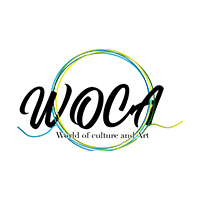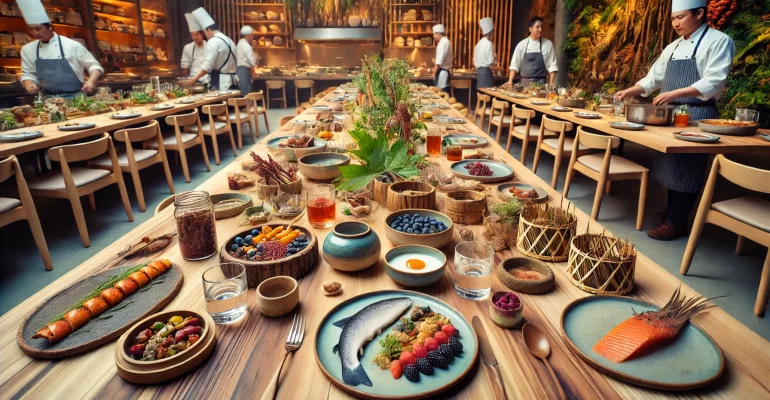Taste the Future, Honor the Past: The Exciting World of Modern Indigenous Cuisine in Canada
Taste the Future, Honor the Past: The Exciting World of Modern Indigenous Cuisine in Canada
Hello, food lovers and culinary adventurers! Are you ready to embark on a mouth-watering journey into the world of modern Indigenous cuisine? Get your taste buds ready, because we’re about to explore how talented Indigenous chefs are blending ancient wisdom with modern creativity to create some of the most exciting food in Canada today. Here at WOCA Group, we’re thrilled to share this delicious cultural experience with you!
What is Modern Indigenous Cuisine?
Before we dive into the delicious details, let’s talk about what makes modern Indigenous cuisine so special:
- It uses traditional ingredients: Foods that Indigenous peoples have been eating for thousands of years.
- It incorporates traditional techniques: Ancient cooking methods that have stood the test of time.
- It embraces innovation: Chefs are finding new and exciting ways to present traditional foods.
- It tells a story: Each dish is connected to culture, history, and the land.
- It’s sustainable: Many chefs focus on local, seasonal, and ethically sourced ingredients.
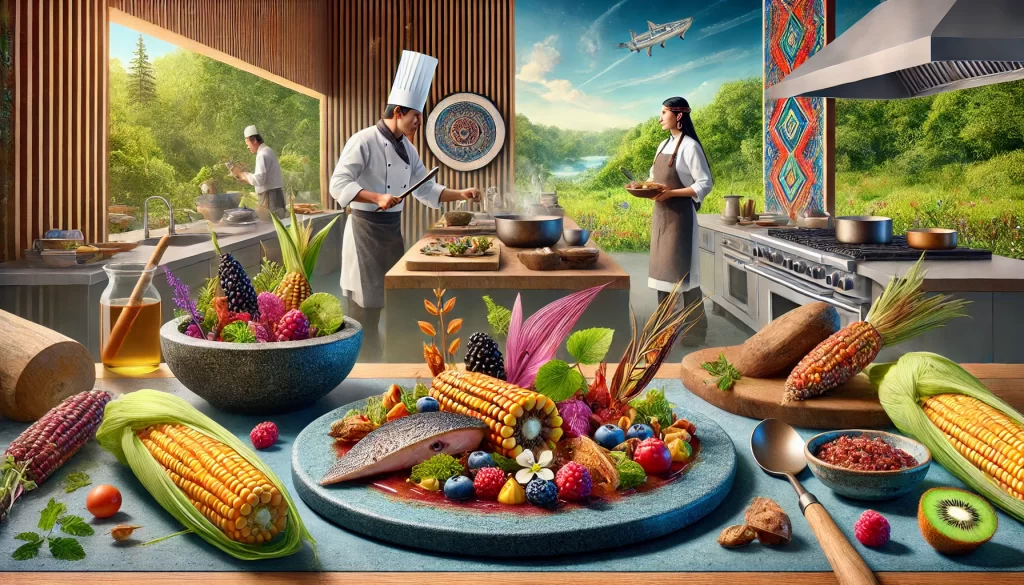
“Modern Indigenous cuisine is like a bridge,” explains Chef Lisa Thunderflavor. “It connects our ancient food traditions with today’s cooking techniques and flavors. It’s a delicious way to honor our past while creating something new and exciting.”
The Stars of the Show: Traditional Ingredients
At the heart of modern Indigenous cuisine are the amazing ingredients that have nourished Indigenous peoples for generations. Here are some star players you might see on menus:
- Wild Rice: Not actually rice, but a nutrient-packed aquatic grass seed.
- Salmon: A crucial food for many coastal nations.
- Bison: Lean, flavorful meat that’s making a comeback.
- Saskatoon Berries: Sweet-tart berries packed with antioxidants.
- Fiddleheads: Young fern fronds with a unique, earthy flavor.
- Maple: Not just for syrup, but used in many savory dishes too.
- Game Meats: Like venison, moose, and rabbit.
- Seaweed: Various types used for flavor and nutrition.
- Indigenous Herbs: Such as sweetgrass, sage, and juniper.
“These ingredients aren’t just delicious,” says nutritionist Dr. Mary Healthwise. “They’re often incredibly nutritious too. It’s like nature’s own superfood list!”
Techniques of Indigenous Cuisine: Blending Old and New
Modern Indigenous chefs are masters at combining traditional cooking methods with contemporary techniques. Here are some ways they’re mixing it up:

- Smoking meets sous-vide: Traditional smoking techniques paired with precise temperature control.
- Modern earth ovens: Using modern materials to recreate the effects of traditional pit cooking.
- Fermentation revival: Ancient fermentation practices applied to new ingredients.
- Molecular gastronomy meets traditional ingredients: Using cutting-edge techniques to present traditional foods in new ways.
- Modernized pemmican: The traditional energy-dense food reimagined for today’s palates.
“It’s like being a culinary detective,” laughs Chef Tom Creativecook. “We’re always asking, ‘How can we honor this traditional technique while making it work in a modern kitchen?'”
Meet the Chefs: Indigenous Culinary Innovators
Let’s meet some of the amazing chefs who are leading the modern Indigenous cuisine movement:
- Chef Rich Francis: A Tetlit Gwich’in chef known for his “Aboriginal Fusion” cuisine. He combines traditional ingredients with classical French techniques.
- Chef Christa Bruneau-Guenther: Owner of Feast Café Bistro in Winnipeg, she creates delicious dishes that highlight Indigenous ingredients from the prairies.
- Chef Shane Chartrand: A Cree chef who explores his Indigenous roots through food, combining traditional ingredients with global flavors.
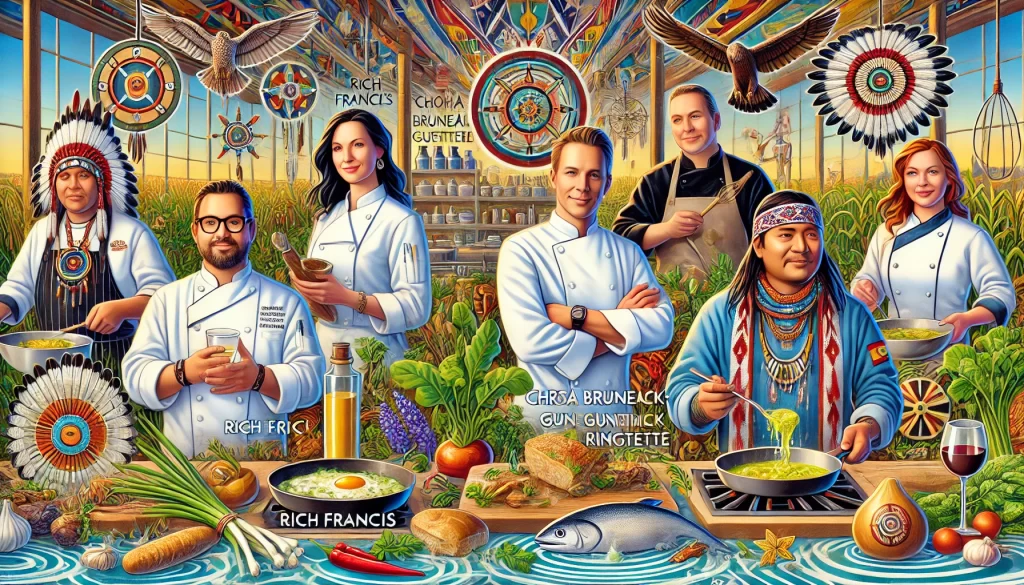
- Chef Johl Whiteduck Ringuette: Owner of NishDish in Toronto, he focuses on traditional Anishinaabe cuisine with a modern twist.
- Chef Marie-Cecile Nottaway: An Algonquin chef who runs Wawatay Catering, bringing traditional Algonquin flavors to contemporary dining experiences.
“Each dish we create is like a piece of our history and culture on a plate,” says Chef Rich Francis. “We’re not just feeding people – we’re sharing our stories and traditions with every bite.”
Signature Dishes: A Taste of Modern Indigenous Cuisine
Let’s take a look at some mouth-watering examples of modern Indigenous dishes:
- Bison Tartare with Juniper Berries: Raw bison meat finely chopped and seasoned with juniper, often served with a quail egg and crispy bannock.
- Sage-Smoked Arctic Char: Arctic char fillets delicately smoked with sage, served with a wild rice pilaf and fiddlehead ferns.
- Three Sisters Risotto: A creamy risotto made with corn, beans, and squash – the traditional “three sisters” of Indigenous agriculture.
- Maple-Glazed Duck with Saskatoon Berry Sauce: Duck breast glazed with maple syrup and served with a rich sauce made from Saskatoon berries.
- Venison Pemmican Meatballs: A modern take on pemmican, formed into meatballs and served with a wild berry compote.
- Seaweed and Wild Mushroom Broth: A deeply flavored broth showcasing the umami flavors of seaweed and foraged mushrooms.
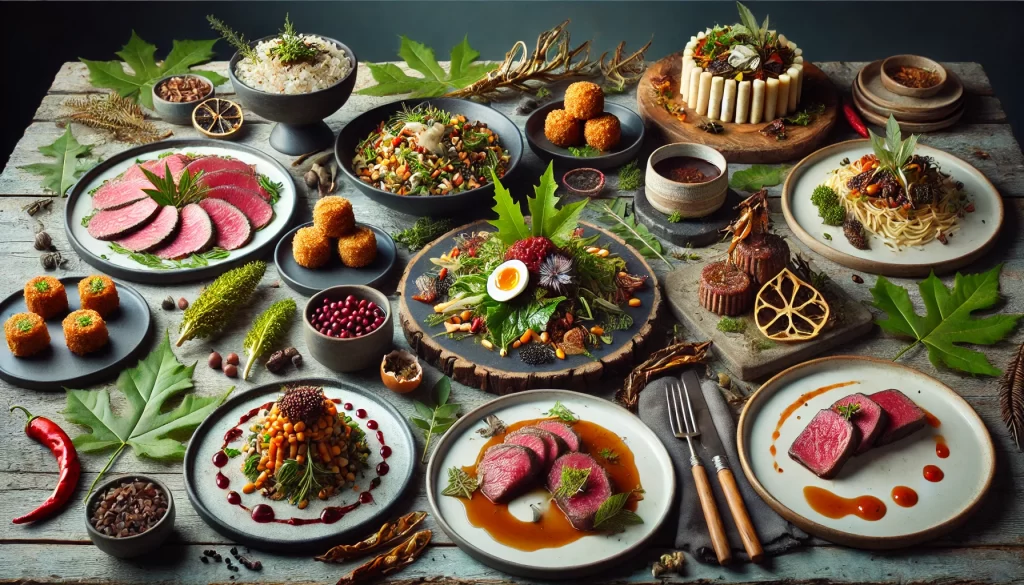
“These dishes are like edible works of art,” says food critic Sarah Tastewell. “They’re beautiful to look at, delicious to eat, and each one tells a story about Indigenous culture and the land.”
Beyond the Plate: The Impact of Modern Indigenous Cuisine
Modern Indigenous cuisine is about more than just delicious food. It’s making waves in several important ways:
- Cultural Pride: It’s helping to instill pride in Indigenous culinary traditions.
- Health and Wellness: By promoting traditional ingredients, it’s contributing to better health in Indigenous communities.
- Economic Opportunities: Indigenous-owned restaurants and food businesses are creating jobs and economic growth.
- Environmental Stewardship: The focus on local, sustainable ingredients supports ecological health.
- Education: It’s teaching both Indigenous and non-Indigenous people about Indigenous cultures and histories.
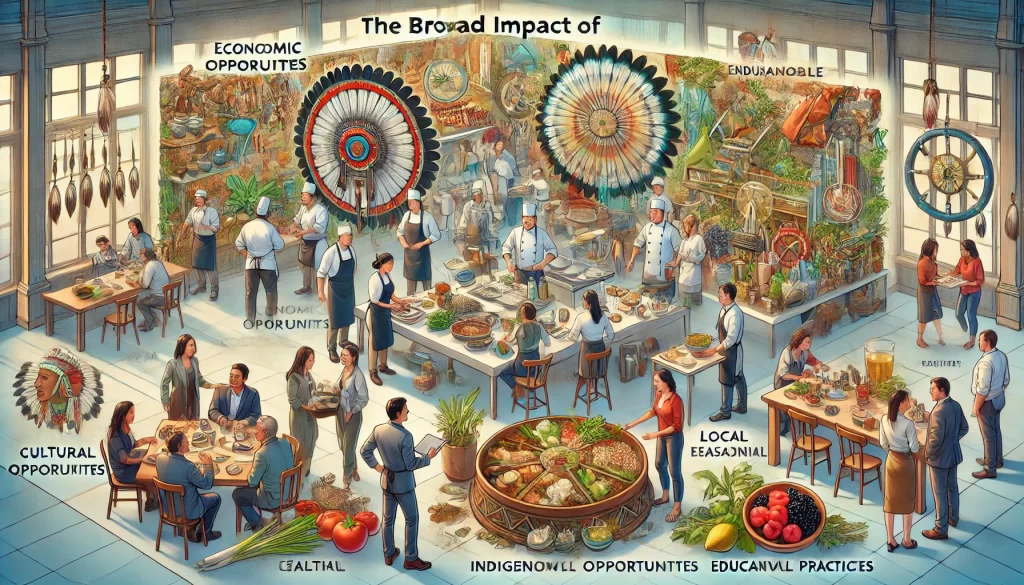
“Every time we serve a dish rooted in our traditions, we’re reclaiming our food sovereignty,” explains Chef Mary Culturekeep. “We’re showing that our food ways are not relics of the past, but a vital part of Canada’s culinary present and future.”
Challenges and Innovations of Modern Indigenous Cuisine
While modern Indigenous cuisine is thriving, it also faces some challenges:
- Access to Ingredients: Some traditional ingredients can be hard to source consistently.
- Regulatory Hurdles: Serving some traditional game meats in restaurants can be complicated due to regulations.
- Cultural Appropriation: There’s a need to balance sharing cuisine with protecting sacred foods and practices.
But Indigenous chefs are finding innovative solutions:
- Foraging Partnerships: Working with professional foragers to source wild ingredients.
- Cultivation Projects: Growing traditional plants to ensure a steady supply.
- Education Initiatives: Teaching about the cultural significance of ingredients and dishes.
“Every challenge is an opportunity to educate and innovate,” says Chef Lisa Problemsolver. “We’re not just cooking – we’re building a movement that respects our past and shapes our future.”
Experience It Yourself: WOCA Group’s Indigenous Cuisine Events
Here at WOCA Group, we’re excited to help you experience the amazing world of modern Indigenous cuisine:
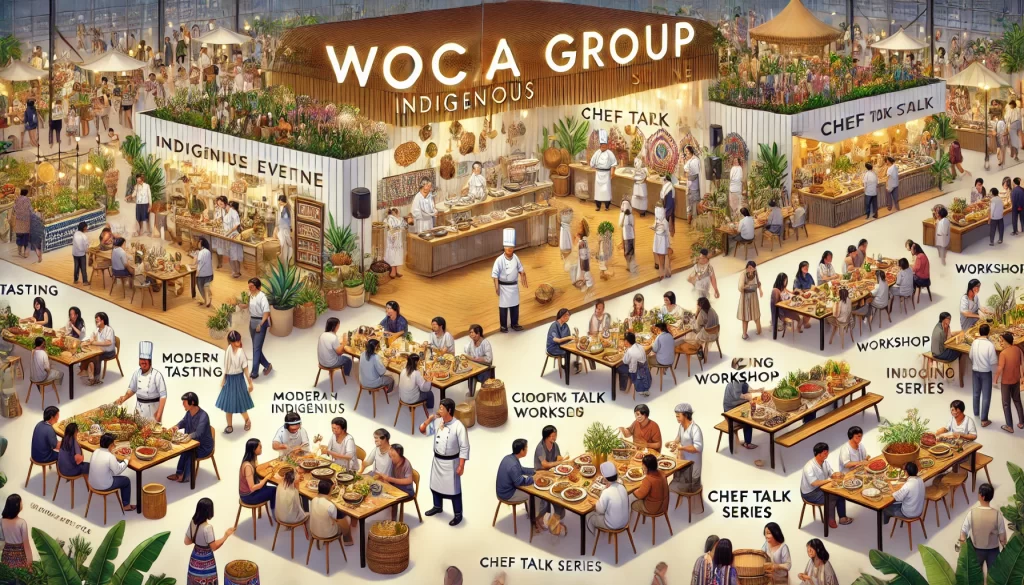
- Tasting Events: We organize tasting events featuring dishes from top Indigenous chefs.
- Cooking Workshops: Learn to cook modern Indigenous dishes yourself with guidance from skilled chefs.
- Chef Talk Series: Attend talks where Indigenous chefs share their stories and culinary philosophies.
- Indigenous Food Markets: We support markets where you can buy traditional ingredients to try at home.
“Our events are like a delicious classroom,” says Tom Eventplanner from WOCA Group. “People come to eat amazing food and leave with a deeper understanding of Indigenous cultures.”
Bring It Home: Trying Modern Indigenous Cuisine
Want to explore modern Indigenous cuisine in your own kitchen? Here are some tips:
- Start with Ingredients: Try incorporating traditional Indigenous ingredients into your cooking. Many are available at farmers’ markets or specialty stores.
- Learn the Stories: When you use an Indigenous ingredient, take time to learn about its cultural significance.
- Support Indigenous Businesses: Buy from Indigenous-owned food companies and restaurants.
- Attend Events: Join WOCA Group events or look for Indigenous food festivals in your area.
- Read and Watch: Check out cookbooks and documentaries about Indigenous cuisine.
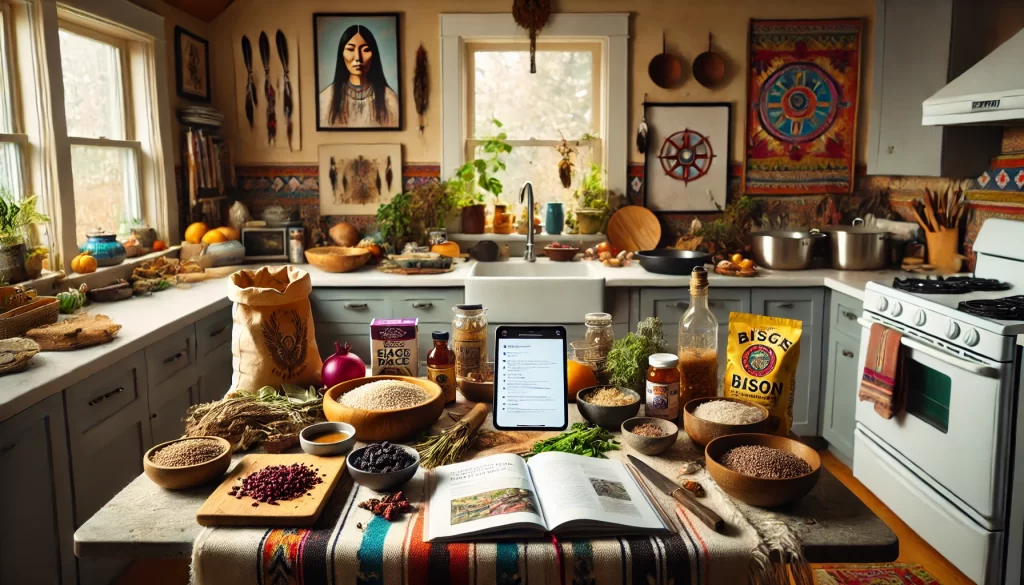
Remember, when exploring Indigenous cuisine, it’s important to do so respectfully. Learn from Indigenous sources and always give credit to the cultures these foods come from.
A Final Bite: The Ongoing Evolution of Indigenous Cuisine
As we wrap up our tasty tour of modern Indigenous cuisine in Canada, let’s recap what we’ve learned:
- Modern Indigenous cuisine blends traditional ingredients and techniques with contemporary cooking styles.
- It’s led by innovative chefs who are passionate about their cultural heritage.
- This culinary movement is about more than just food – it’s about cultural pride, health, and sustainability.
- While there are challenges, Indigenous chefs are finding creative solutions.
- You can experience this exciting cuisine through restaurants, events, and even in your own kitchen.
- WOCA Group offers various ways to learn about and taste modern Indigenous dishes!
Modern Indigenous cuisine is like a living cookbook that’s constantly being updated. It honors the wisdom of the past while embracing the possibilities of the future. It’s a delicious reminder that Indigenous cultures are not static relics, but vibrant, evolving communities with so much to share.
The next time you see an Indigenous ingredient on a menu or spot an Indigenous-owned restaurant, remember that you’re not just in for a tasty meal – you’re being invited to participate in a rich cultural tradition that’s being reinvented for the 21st century. Now it’s your turn! Have you tried any modern Indigenous dishes? Which one sounds most appetizing to you? Share your culinary adventures or questions in the comments below. Let’s keep the conversation going and celebrate the incredible world of modern Indigenous cuisine together!
And don’t forget to check out WOCA Group’s upcoming Indigenous cuisine events. Together, we can savor the flavors of cultural understanding and delicious innovation!
